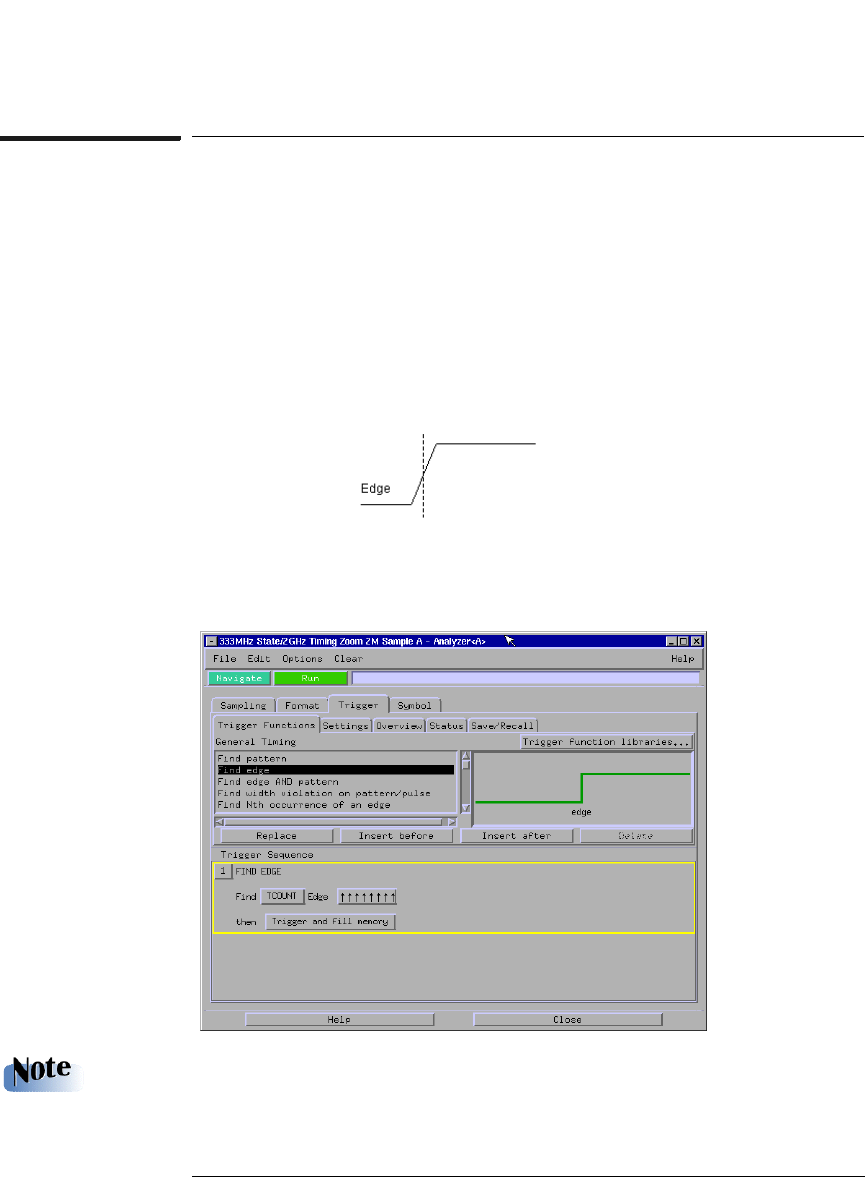Installation guide
Table Of Contents
- A Quick Tour
- Before You Begin
- Introduction to Timing Analysis: Trigger on an Edge
- Verify Pulse Widths
- Introduction to State Analysis: Trigger on an Event
- Trigger on a Sequence of Events
- Trigger on a 4 Bit Serial Pattern
- Trigger the Oscilloscope with the Timing Analyzer
- Load the RESET Configuration File
- Connect the Oscilloscope Probe and Turn the Glitch On
- Get the Analog Waveform on the Display
- Set Up the Timing Analyzer
- Set Up the Timing Analyzer to Trigger on the Glitch
- Tell the Oscilloscope When to Trigger
- Set Up the Analyzer to Arm the Oscilloscope
- Run the Timing Analyzer and Oscilloscope
- Add the Analog Waveform to the Timing Waveform
- Turn the Glitch Off
- Save Your Work
- Lesson Summary
- Using the Pattern Generator
- Load the RESET Configuration File
- Connect the Pattern Generator
- Set Up the Timing Analyzer
- Set Up the Bus Labels
- Define the Trigger Conditions: Trigger on a 1
- Set Up the Pattern Generator
- Program the Pattern Generator Output
- Start the Pattern Generator and View the Walking Ones Pattern
- Stop the Pattern Generator
- Save Your Work
- Lesson Summary
- Setting the Jumpers
- About the Credit Card Board

34
Chapter 3: Introduction to Timing Analysis: Trigger on an Edge
Define Trigger Conditions: Trigger on an Edge
Define Trigger Conditions: Trigger on an Edge
A term that should be familiar to oscilloscope users is “triggering”. It is
also used in logic analyzers, and is often called “trace point”. Unlike an
oscilloscope, which starts the trace right after the trigger, a logic
analyzer can show information prior to the trace point, which is known
as negative time, as well as information after the trace point.
You can trigger the analyzer using specified events and edges. In this
exercise, you will use the rising edge of bit 7.
1 Select the Trigger tab.
2 Under the Trigger Functions tab, click on ‘Find edge’.
Trigger functions are predefined trigger sequences that can be
used “as is” or that can be combined and modified for creating
more complex trigger sequences.










